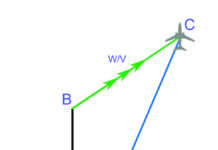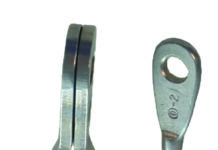Just for fun, ask an instrument student to describe the single most confusing part of learning to fly instruments. Then ask a veteran instrument pilot to describe the single most confusing maneuver involved with instrument flight. Odds are youll get the same answer: holding pattern entries.
Holding patterns just dont get any respect, which isnt surprising considering theyre a last-ditch effort to salvage a route thats in jeopardy because of traffic or weather. Controllers dont like stacking up airplanes, and pilots certainly dont like droning around in circles for $100 an hour.
Sometimes holding is a necessary evil, but many instrument pilots secretly quake at the thought of trying to figure out whether a teardrop, parallel or direct entry is best and then dusting off the memory of how to actually execute them. Many pilots wince when they hear a controller say Advise ready to copy holding instructions. They take comfort in knowing that controllers will generally assign them a hold that enables direct entry if the hold is not part of a charted procedure.
By the book, the pilot should make a teardrop entry if approaching the fix from a 70-degree slice of sky on the opposite side of the fix and radial from the protected holding pattern. A parallel entry is suggested if approaching from a 110-degree slice on the same side of the radial as the hold but ahead of the fix. Everything else is a direct entry.
The teardrop entry involves flying through the fix, turning to a heading of inbound course plus 150 degrees (or outbound heading minus 30 degrees), flying straight for one minute, then executing a turn in the same direction as the hold and intercepting the inbound holding course.
The parallel entry requires flying to the fix, turning parallel to the inbound course but on the non-hold side for one minute, then making a 180-plus degree turn in the opposite direction of the hold until intercepting the inbound course or returning to the fix.
A direct entry is just that. Proceed to the fix then turn into the hold in the assigned direction, generally to the right.
Applying this in the cockpit is another matter. Figuring out the proper entry can be complex, and a complex new task is best not introduced when the pilot is already dealing with a new clearance and making a relatively unfamiliar maneuver (possibly in the clouds).
Instructors through the years have taught various tricks, from drawing it out on your kneeboard to holding your hand up to the DG (or CDI) and mentally rotating the instrument until it lines up with the intended hold. (It was this hint that informed you that, at rest, your thumb makes about a 70-degree angle to the rest of your hand.) Difficult to describe, just as difficult to do, especially for a procedure used as seldom as a non-direct holding pattern entry. Sportys catalog even sells a $14.95 holding pattern computer that provides entry and outbound heading.
In the age of the automated cockpit, pilots tend to shun the complex. Why figure wind correction angles when the moving map GPS draws a line for you to follow? Why calculate holding pattern entries when theyre either direct or the pattern itself is drawn on the cockpit display screen? The broader question might be: Why do something difficult and archaic when theres an easier way that works just as well?
Why indeed.
The AIM provides passing reference to the fact that other entries can be done, and in fact even the most hard-nosed DPEs will accept any entry that gets the job done without the result of the maneuver being in doubt, although they may flick some cigar ashes on you for it. An alternative entry needs to ensure that the aircraft remains within the protected airspace defined by the holding clearance. The practical test standards for the CFII certificate stipulate using the FAA-preferred holding pattern entries, but the instrument rating PTS does not.
In practice, getting into the hold isnt rocket science, and it doesnt require you to perform the mental gymnastics required to add 70 degrees to 313 degrees. A review of accident records shows no instance where a mid-air collision occurred when one airplane was in a holding pattern on an IFR flight plan. Even NASAs database of near mid-air collisions wont show that the risk of collision is a factor in holding pattern entries.
While instrument flying requires precision, getting into a holding pattern is close enough flying at its finest. What it boils down to is this. If youre on the holding side of the fix, make a direct entry, if not, pass the fix and turn around. Thats where the 80/260 turn comes in.
The 80/260 is a great course-reversal maneuver. It minimizes the amount of time you spend flying in the direction opposite your intended direction. Its easy to remember and easy to execute.
If youre flying toward the fix and need to hold on the other side, obviously a direct entry is out. Instead, fudge your course slightly to arrive on the desired radial slightly before you get to the fix, then track the radial to the fix. At that point, youre set up for an 80/260 turn. Lets say youre holding north of DME 25 on VOR radial 360, with right turns. Youll be approaching from the south.
When you reach the DME 25 fix, make an 80-degree turn to the left. As soon as the 80-degree turn is completed, make a 260-degree turn to the right to re-intercept the radial. Presto, youre in the racetrack and ready to fly the holding pattern assigned.
You may note that this procedure is similar to the teardrop entry. The primary differences are that the teardrop entry involves a shallower turn and a one-minute outbound leg. In addition, the teardrop entry is not endorsed if youre coming from the same side of the radial as the hold is on.
This distinction – and the need to mentally juggle it while calculating your current position relative to the holding pattern – is what makes the 80/260 so much simpler to use.
Interestingly, the FAA accepts the 80/260 as a legitimate course reversal maneuver. In fact, its included in the FAAs Instrument Flying Handbook as an alternative for the standard procedure turn. Think about it. The procedure turn is used as a course reversal maneuver for instrument approaches. And for a non-direct holding pattern entry, thats really what the pilot is trying to do then too.
So add the 80/260 to your repertoire, if its not already there. Youll save yourself some anxiety the next time the controller announces a hold, and we could all do with that.
Also With This Article
Click here to view “The Standard Entries, FAA-style.”



